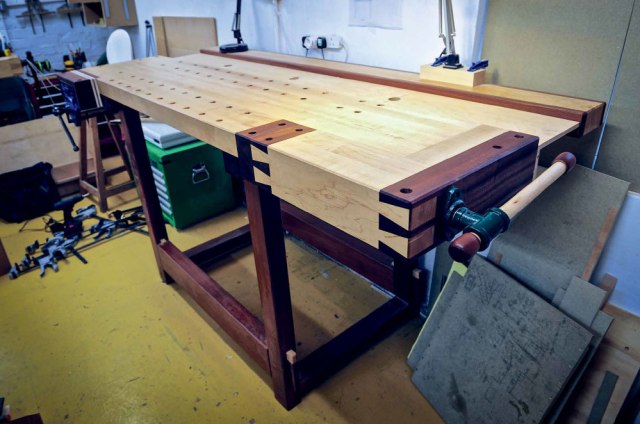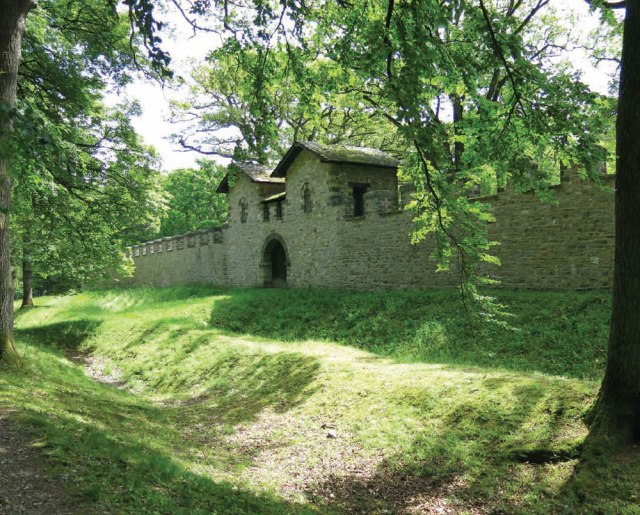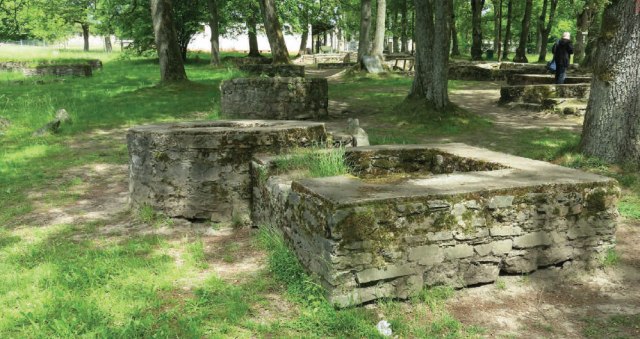
This is an excerpt from “Ingenious Mechanicks” by Christopher Schwarz.
Throw the Bench Down the Well
It’s not unusual to find Roman artifacts stashed in wells. Archaeologists have recovered thousands of tools, domestic goods, nails and even coins from the bottoms of Roman wells. The reason: Stashing valuable goods in wells was a typical Roman reaction to the threat of an overwhelming attack. If the Romans threw their precious bits down wells before retreating, there’s a chance they could recover their valuables later. And if they weren’t able to recover their items, there’s a chance their attackers wouldn’t find them, either.
But before we start discussing the fall of Saalburg, let’s look at how it started.
The Saalburg fort was founded about 85 C.E. as two earthen enclosures to protect a mountain pass. This was later improved to a wood and earth fort. In the second century C.E., Saalburg was expanded to become an impressive stone fort that housed a “cohort,” a unit of about 500-600 Romans. The fort served as one of the important links in the “limes” (pronounced “lee-mez” and not like the citrus), which was the frontier between the Roman Empire and the hostile Germanic tribes to the north.

About 260 C.E., the Roman limes fell. All areas east of the Rhine River were lost to the Germanic tribes of the north. Saalburg was abandoned during this time, apparently without a fight. Yet the fact that the fort’s wells were filled with tools and other important commercial objects suggests that its occupants felt threatened.
After the fort was abandoned, it was used as a quarry. And its history and very existence faded away until the late 19th century. After decades of research into the Saalburg fort by archaeologists, Kaiser Wilhelm II ordered in 1897 for the fort to be reconstructed. It is now an open-air museum and research center for archaeologists who study the limes and Roman technology.
We Go Below
Today, below the museum is a climate-controlled room with thousands of Roman objects. That’s where museum educator Rüdiger Schwarz took us one summer day in June. Its entrance is below grade, like a cellar door. Then you traipse down a few steps to a masonry-lined room that looks like the mechanical area of a school or office building. There’s equipment to control humidity. Lots of locked doors. Any janitor would feel at home.
Rüdiger unlocks a couple of doors and the scenery changes. It’s still a climate-controlled basement, but the hallways are lined with wooden shelves that go from floor to ceiling. And they are filled with bricks, pottery and woodwork. All of it neatly labeled. Though we’re walking at a normal pace, I stumble when my eye latches onto a label or an interesting ceramic. My feet don’t know what to do – move or stop.
We make a left turn; as do the shelves. To my left are banks of wide and shallow drawers filled with hundreds of artifacts. The only sound is a buzz from the lights above as they flicker on and warm up. I don’t suffer vertigo, but the floor seems to sweep upward as we pass into a cluster of wooden objects – wheels, stools and pieces of bridges that are bound in iron. Every wooden object is blackened from its time in a well that had no oxygen but lots and lots of iron objects.
And then there it is – the workbench standing on four legs like a lame dog. None of its legs are in the same plane, likely the result of it being waterlogged for hundreds of years and then being dried out in 1901. At some point, the benchtop split in its middle across its width, but it has been mended and looks sturdy and ready for straddling. There’s a piece removed from the back end where archaeologists attempted to date the bench – the offcut is also handy so you can see the annular rings of the tree and the way the iron has leached its way deep into the fibers of the workbench. It is black through and through.

I want to sit down, but the only seats available are 1,800-year-old stools and benches. And that’s when I realized the bench was between my legs.
“Pick it up.”
For me, the Saalburg workbench is a touchstone and a mystery. As the earliest surviving workbench, it is a link to woodworkers who existed centuries before us. Their tools are remarkably similar to ours. Yet their workbenches are a bit foreign. Many of the benches are knee-high and have workholding schemes that are dirt simple and somewhat alien.
When I’ve shown images of these early benches to other woodworkers, many have ready explanations for what this peg did or that notch was used for. But they don’t really know. The only way to find out – aside from cloning an old Roman woodworker – is to build these benches and build furniture using them. And even then, it’s difficult to be certain you are on the right path.
— Meghan B.